 Another in the series of holiday destination airports being released by Aerosoft. This one is of Kos Island International Airport, LGKO, also known as “Hippocrates”. The airport is located on the Greek island of Kos approximately 27 kilometres from the city of Kos and next to the village of Antimachia.
Another in the series of holiday destination airports being released by Aerosoft. This one is of Kos Island International Airport, LGKO, also known as “Hippocrates”. The airport is located on the Greek island of Kos approximately 27 kilometres from the city of Kos and next to the village of Antimachia.
Originally opened in 1964 it is now the sixth busiest airport in Greece as far as passenger traffic goes. To ease some of the burden of this ever increasing traffic it has had to expand it’s facilities both in 1980 and as recently as 1997 with the opening of a new arrivals building. In 2007 just over 1.6 million passengers passed through it’s facilities.
Installation and Configuration
This is not a big download, only 55Mb which is relatively small these days.
What can I say? Again the Aerosoft installer in my view is one of the best out there. It is simple to execute, straightforward and does a great job. When all is said and done the scenery has been installed, a program group has been created and the scenery has been added to FSX.
Documentation
The package includes a manual in the usual PDF format that is written in both German and English. It begins with system requirements; for this airport they should be easily met by most flight simmers. They are; P4 2.6 Ghz although they recommend a Dual Core 3Ghz, 50Mb hard drive space, 2 GB RAM and a 3D graphics card with 256 Mb but 512 is recommended. The next page is a breakdown of the installation procedure and also how to remove “Kos X” should you feel the need. There are two pages devoted to general and technical information specific to this airport. They include such details as location, runway length, navaids, frequencies and movement statistics. They finish the manual off with a couple of technical notes. They have some recommendations on how to optimize your performance. Some of them are to switch off your ground shadows, set autogen density to normal and set AI traffic to a max of 25%. Just as with every addon package my suggestion is to always take a few minutes and read the manual.
Charts are not included nor is there any mention of them anywhere. They did state with their release of Santorini X that Greece is not very forthcoming with airport charts and that does seem to be the case here. None are included. I did a search on the net and managed to find several sources where I was able to download a set of recent charts.
Flying the Scenery
The primary focus of this release is the airport although they have added some minor enhancements to the island of Kos as well.
[slideshow id=65]
Having only a single runway the layout is simple. You have two aprons; the primary and larger of the two is east of the runway and next to the terminal building and control tower. The smaller secondary apron is west of the runway and used for general aircraft parking.
There aren’t many structures at this airport however everything you see is well done and they’ve incorporated lots of small details that make it an interesting airport to be at. The main terminal and control tower buildings are excellent examples. You can see how the developers have gone that extra bit and added what some may consider as insignificant details but for me this is what I look for. On the tower complex here are some items of note: there are ventilation pipes on the side of the building, several metal ladders leading to access points, roof mounted ventilation units, different types of antennae on the tower roof as well as clearance lights, there are windows along the bottom floor that appear to be partially open. Between the tower and terminal is an open area that has a canopy to help keep the baggage carts out of the weather. If you look up under this canopy you can see the individual metal support ribs. Again, this carries through to the main passenger terminal where you can see the exterior metal guardrails that surround the second floor balcony. I could list more but then that would take away some of the fun of exploring it for yourself.
There are so many components that go into making an airport look authentic. In addition to the buildings and as you look around and explore you will see that the developers of this scenery package seem to have done their homework and included everything you’d expect to find. All the usual items you are accustomed to seeing are here; lamp posts, VOR, approach lights, PAPI lights and then there are a few you don’t see all that often such as fire extinguishers and flower pots.
There is an abundance of different vehicle types throughout the grounds. Most are static but you will see several different types of animated vehicles making there way around the apron area. It was not uncommon to see a car pulling up to the corner of the terminal as if it were dropping off or picking up passengers. You will also see fuel and catering trucks making their way around the tarmac. The assortment of static vehicle types is quite good as well. The main airport parking lot in front of the terminal is about a third full with a good mix of cars. Next to this is another lot that has also been populated with some buses. There are shrubs and planters that adorn the entrance and medians. From here you can also peer through the chain link fence and see the baggage carts between the tower and main terminal buildings.
Within the airport the ground textures were sharp, clear and realistic. The runways and areas were you had high traffic or where the aircraft parked showed signs of dirt and grime. Overall I have to say that I was happy with this aspect of the scenery.
At night the airport looked just as good. Developers seem to be getting better and better at portraying the subtleties of lighting both on the ground and on the buildings. You can see how much brighter the light is directly below the fixtures and how it seems to fade as you get further away. There are also differences in intensity based on whether the lights are reflecting off of the lighter coloured concrete surfaces or the darker ground textures. All of this makes for a much more realistic night time environment. You’ll also see that the approach, runway, taxiway and apron lights give off a subdued glow which is quite realistic.
[slideshow id=66]
There is an unusual feature that you don’t normally see at an airport; a small white church. It is perched on a hill overlooking the number 2 parking spot on the main apron. They’ve accurately recreated this feature. You see the open bell tower with the bell of course and just above is the cross. The rear of the church has a curved wall and then to get to the church there is a long ramp and stairway. Night time you can check out the red lamp on top of the cross.
Regarding frame rates which is a concern to many when considering the purchase of a new piece of scenery. During my evaluation I flew several different aircraft; the FSX Ultralight and Cessna 172, Carenado C185, Cera Simaircraft 412 and 212 and the Feelthere ERJ145. Regardless of the aircraft type the simulator remained fluid and never bogged down.
The primary focus of the package is the airport however they do state that they have added “Detailed mesh and adjusted landclasses, coastlines for the entire island”. The improvements they made to the island are subtle and not always obvious. Without the use of photo scenery textures the roads and buildings they’ve added often look out of place because they don’t line up with the base textures. Near the airport there are some major roadways and unfortunately the underlying textures don’t match up. I was disappointed with this; I guess I’ve become spoiled because of some of the earlier Aerosoft releases such as Ibiza and Menorca where they used hi res photo textures and custom objects to recreate these islands. As this scenery addon is all about the airport I will just say that if you are buying this for more than the airport you may be disappointed.
Flying into this airport was not a big challenge. The surrounding area is relatively flat and being an island you have lots of time to line up for your approach. I flew instrument approaches using the ERJ145. The airport is equipped with VOR only so landing was a bit more involved than at an airport equipped with ILS capabilities but none the less everything lined up and worked out nicely.
 Flying high above the island as depicted in FSX
Flying high above the island as depicted in FSX
 Flying high above the island with Aerosoft’s Kos X
Flying high above the island with Aerosoft’s Kos X
Final Thoughts
The depiction of this airport is very good and I consider it to be another winner for Aerosoft. There are few airports for Greece so this certainly helps to fill that void for anyone interested in flying this part of the world. It’s too bad that the island didn’t get the same treatment as the airport. That would have been the icing on the cake.
My Ratings
- Installer: Very good. Can’t get much simpler than this.
- Documentation: Manual is good but there are no charts.
- Modelling: The airport is very good. Frame rate friendly and full of details.
- Extras: Modified shorelines along with some buildings on the island.
Download Size: 55Mb
Price: EUR 12.59
Link: http://secure.simmarket.com/aerosoft-online-kos-x.phtml
Test System: Intel i7 920 OC @ 3.8 Ghz, 6 Gb RAM, EVGA 285 GTX w/1Gb video, Win 7 Ultimate 64, FSX w/acceleration, Ultimate traffic 2, REX, AES 2.06




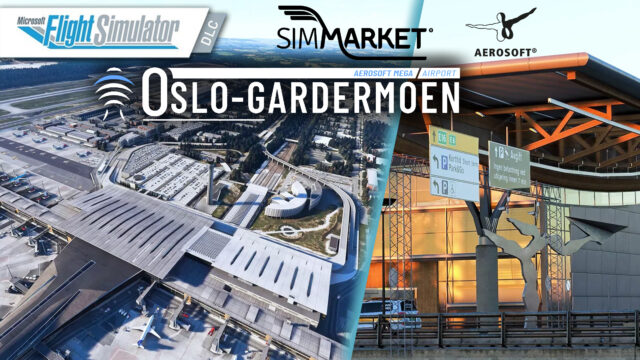
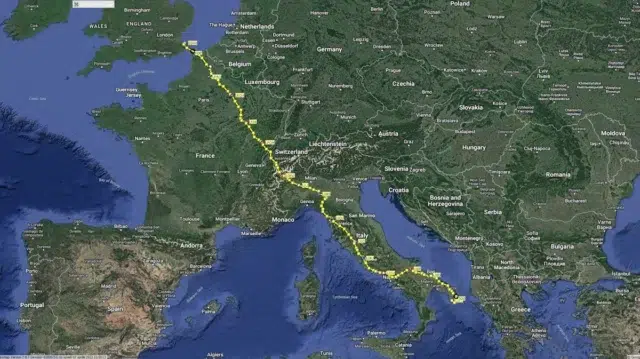
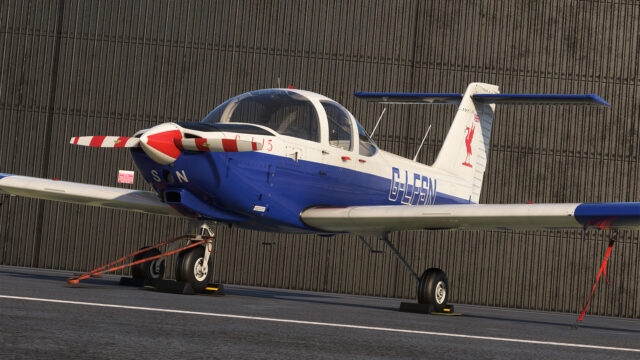
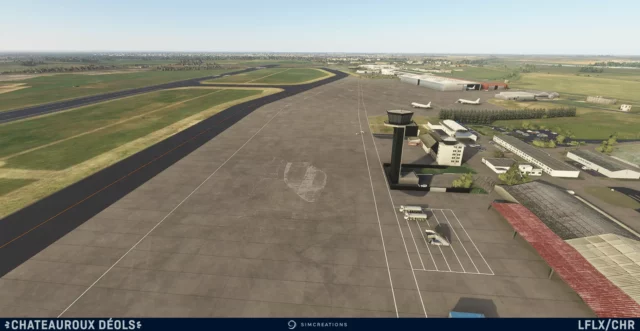
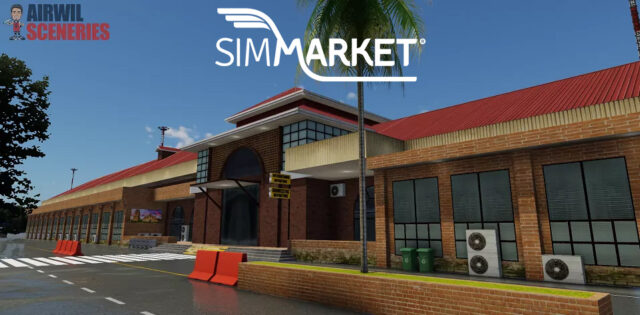
![Aerosoft – Frankfurt EDDF MSFS Preview [Video]](https://www.simflight.com/wp-content/uploads/2024/04/Aerosoft-Frankfurt-EDDF-MSFS-Preview-thumb.jpg)